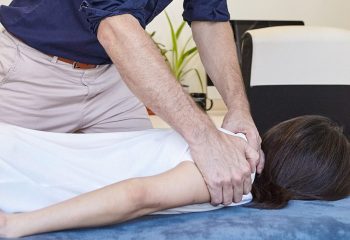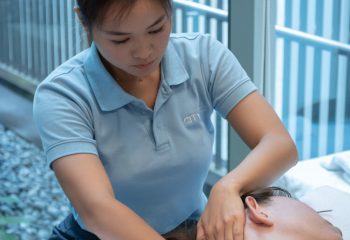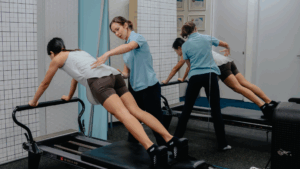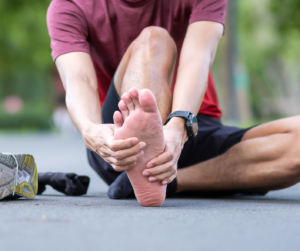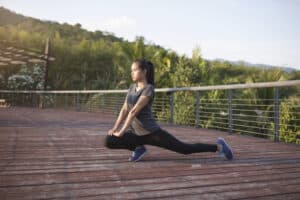Welcome to our clinic’s guide, where we delve into the world of physiotherapy tools—a realm where innovation meets rehabilitation. If you’ve ever wondered about the diverse range of tools that physiotherapists employ to enhance patient care, you’re in for a treat. Let’s explore the what, the why, and the how behind these remarkable instruments.
What are physiotherapy tools used for?
Physiotherapy tools are invaluable aids that assist healthcare professionals in addressing a myriad of conditions and concerns. These tools are designed to support and optimise the body’s natural healing processes, making them indispensable in the field of physiotherapy.
Which physiotherapy tools are used for certain conditions?
Physiotherapy for neck, shoulder and back pain
For those grappling with the discomfort of neck, shoulder, or back pain, physiotherapy tools offer targeted relief. From massage balls to ergonomic supports, these tools work in harmony to alleviate tension and promote flexibility. Dry needling might also be used.
Here at City Osteopathy and Physiotherapy, we work closely with Osteopaths. Hence, our practitioners may also carry out manual therapy to facilitate relief for specific pains.
Physiotherapy for joint aches
When joints ache, physiotherapists often turn to tools like resistance bands and joint mobilisers. These aids facilitate controlled movements, aiding in the restoration of joint function and flexibility.
Physiotherapy for tennis and golfer’s elbow
Tennis and golfer’s elbow can be notoriously stubborn, but physiotherapy tools such as elbow straps, resistance exercises and sports taping can provide effective relief. These tools are tailored to reduce strain and encourage proper healing.
Physiotherapy for dislocations, sprains, strains and tears
Dealing with dislocations, sprains, strains, or tears? Physiotherapy tools like kinesiology tape and therapeutic ultrasound can play a pivotal role in the recovery process. They aid in stabilisation, reduce inflammation, and promote tissue repair.
Physiotherapy for rehabilitation from injuries and surgeries
Post-injury or surgery, the right physiotherapy tools are crucial for a smooth recovery. From balance boards to resistance equipment, these tools help rebuild strength, coordination, and range of motion. Depending on the condition, other methods such as dry needling and shockwave might be used.
Additionally, clinical pilates can be used for rehabilitation by strengthening core muscles, improving posture, and reducing or eliminating chronic pain. The improved strength and flexibility leads to better balance, coordination and overall physical health.
Physiotherapy for heart and circulation issues
Physiotherapy extends beyond the musculoskeletal system. Tools like cardiovascular exercise equipment and pressure garments are employed to address heart and circulation issues, contributing to overall cardiovascular health.
What are the physiotherapy tools for effective rehabilitation?
In the realm of physiotherapy, a diverse array of tools takes the spotlight, each playing a unique role in the journey of rehabilitation. Let’s delve into the specifics of some key tools that physiotherapists employ to enhance recovery and foster optimal well-being.
Dry needling

Dry needling involves the insertion of thin needles into specific trigger points or knots in muscles, aiming to release tension and alleviate pain. Despite its needle-based approach, the procedure is termed “dry” as it doesn’t involve injecting any substances.
Application in rehabilitation:
- Pain reduction: Dry needling is particularly effective in addressing muscular pain and tightness.
- Improved range of motion: By releasing muscle knots, dry needling contributes to increased flexibility and range of motion.
- Enhanced healing: The stimulation of trigger points promotes blood flow, accelerating the natural healing process.
Sports taping

Sports taping, often known as kinesiology taping, involves the application of adhesive strips to specific areas of the body. These tapes are designed to mimic the skin’s elasticity and can be stretched to varying degrees.
Application in rehabilitation:
- Joint support: Sports taping provides additional support to joints, aiding in stability during movement.
- Pain management: The tape can help reduce pain by lifting the skin and creating space between layers, allowing for improved blood circulation.
- Facilitation of movement: Taping is often used to facilitate proper movement patterns, supporting rehabilitation exercises.
Shockwave therapy

Shockwave therapy involves the application of acoustic waves to targeted areas of the body. These waves stimulate cellular repair and promote the healing of injured tissues.
Application in rehabilitation:
- Tissue regeneration: Shockwave therapy accelerates the regeneration of damaged tissues, aiding in the recovery process.
- Pain reduction: By disrupting pain signals, this therapy can significantly alleviate chronic pain conditions.
- Improved blood flow: The acoustic waves enhance blood circulation, promoting the delivery of nutrients to the treated area.
Ultrasound therapy

Ultrasound therapy utilises high-frequency sound waves to generate heat within body tissues. This heat, in turn, promotes healing and reduces inflammation.
Application in rehabilitation:
- Tissue healing: Ultrasound therapy accelerates the healing of soft tissues, making it beneficial for injuries like strains and sprains.
- Pain relief: The warmth generated by ultrasound helps alleviate pain and discomfort.
- Enhanced flexibility: By increasing blood flow and reducing stiffness, ultrasound therapy contributes to improved flexibility.
Resistance bands

Resistance bands are elastic bands of varying thickness and resistance levels. They are a versatile tool used to add resistance to exercises, promoting strength building and flexibility.
Application in rehabilitation:
- Muscle strengthening: Resistance bands target specific muscle groups, aiding in progressive strength training.
- Rehabilitation exercises: Physiotherapists incorporate resistance bands into customised exercise routines to enhance overall rehabilitation.
- Portable and accessible: These bands are convenient for home exercises, allowing patients to continue their rehabilitation outside the clinic.
Incorporating these physiotherapy tools into a comprehensive rehabilitation plan can significantly enhance the effectiveness of the therapeutic process. It’s crucial to note that the selection of tools depends on the individual’s condition, and their application is often guided by the expertise of physiotherapy professionals. Our physiotherapists here at City Osteopathy and Physiotherapy are highly experienced with such equipment, offering a holistic and personalised approach to rehabilitation. Take the first step and book a consultation with us today!
How do physiotherapists choose the right tools for personalised patient care?
The art of selecting physiotherapy tools is a nuanced process that involves considering the unique needs of each patient. Physiotherapists assess factors such as the nature of the condition, the patient’s medical history, and individual preferences. This personalised approach ensures that the chosen tools align seamlessly with the patient’s rehabilitation journey.
How can physiotherapy tools aid in the recovery and prevention of injuries?

Physiotherapy tools act as guardians of both recovery and prevention. Through targeted exercises and interventions, these tools strengthen muscles, improve joint stability, and enhance overall biomechanics. This not only accelerates healing but also fortifies the body against future injuries.
Empowering recovery: The journey with physiotherapy tools
The world of physiotherapy tools is a fascinating landscape where science, innovation, and care converge. As we continue to explore new horizons in rehabilitation, these tools remain steadfast companions, empowering both patients and physiotherapists on the journey to recovery and optimal health. Ready to embark on your personalised path to wellness? Book a consultation with our experienced physiotherapists skilled in harnessing the potential of these transformative tools. Take the first step towards a healthier, more empowered you. Your journey to recovery starts here.
FAQs
Are there physiotherapy tools for hands?
Absolutely! Physiotherapy tools cater to hand rehabilitation through exercises, hand grippers, and specialised massage techniques. These aids are particularly beneficial for conditions like carpal tunnel syndrome and trigger finger.
Can physiotherapy tools be used at home?
Absolutely! The versatility of physiotherapy tools extends beyond the confines of a clinic, allowing individuals to actively participate in their own rehabilitation from the comfort of home. Here’s a closer look at how various tools can be effectively employed in a home setting, offering a seamless extension of the care provided by physiotherapists.
- Foam rollers: Foam rollers are excellent for self-myofascial release, a technique that targets tightness and muscle knots.
Application at Home: Patients can use foam rollers to gently massage and stretch muscles, aiding in the reduction of muscle tension and improving flexibility. 2. Resistance bands: Compact and adaptable, resistance bands provide varying levels of resistance for strength training.
Application at Home: Physiotherapists often prescribe specific resistance band exercises that patients can perform at home. These exercises focus on strengthening different muscle groups to support overall rehabilitation. 3. Exercise balls: Exercise balls enhance core stability and balance, promoting strength and flexibility.
Application at Home: Patients can engage in targeted exercises, such as stability ball crunches or pelvic tilts, to improve core strength and stability under the guidance of their physiotherapist. 4. Heat and cold packs: Heat and cold therapy aids in managing pain and inflammation.
Application at Home: Physiotherapists may recommend the use of heat or cold packs at home to complement in-clinic treatments. These packs are easily accessible and can be applied to the affected area for short durations. 5. Resistance tubes: Similar to resistance bands, tubes provide an alternative for strength training.
Application at Home: Patients can incorporate resistance tube exercises into their home routines, targeting specific muscle groups to build strength gradually. 6. Balance boards: Balance boards enhance proprioception and stability, crucial for injury prevention.
Application at Home: Under the guidance of a physiotherapist, individuals can perform balance exercises on these boards at home, contributing to improved coordination and stability.
To maximise the benefits of using physiotherapy tools at home, clear communication with your physiotherapist is key. Regular follow-ups and updates on your home exercise routine allow for adjustments based on progress and any emerging needs.


